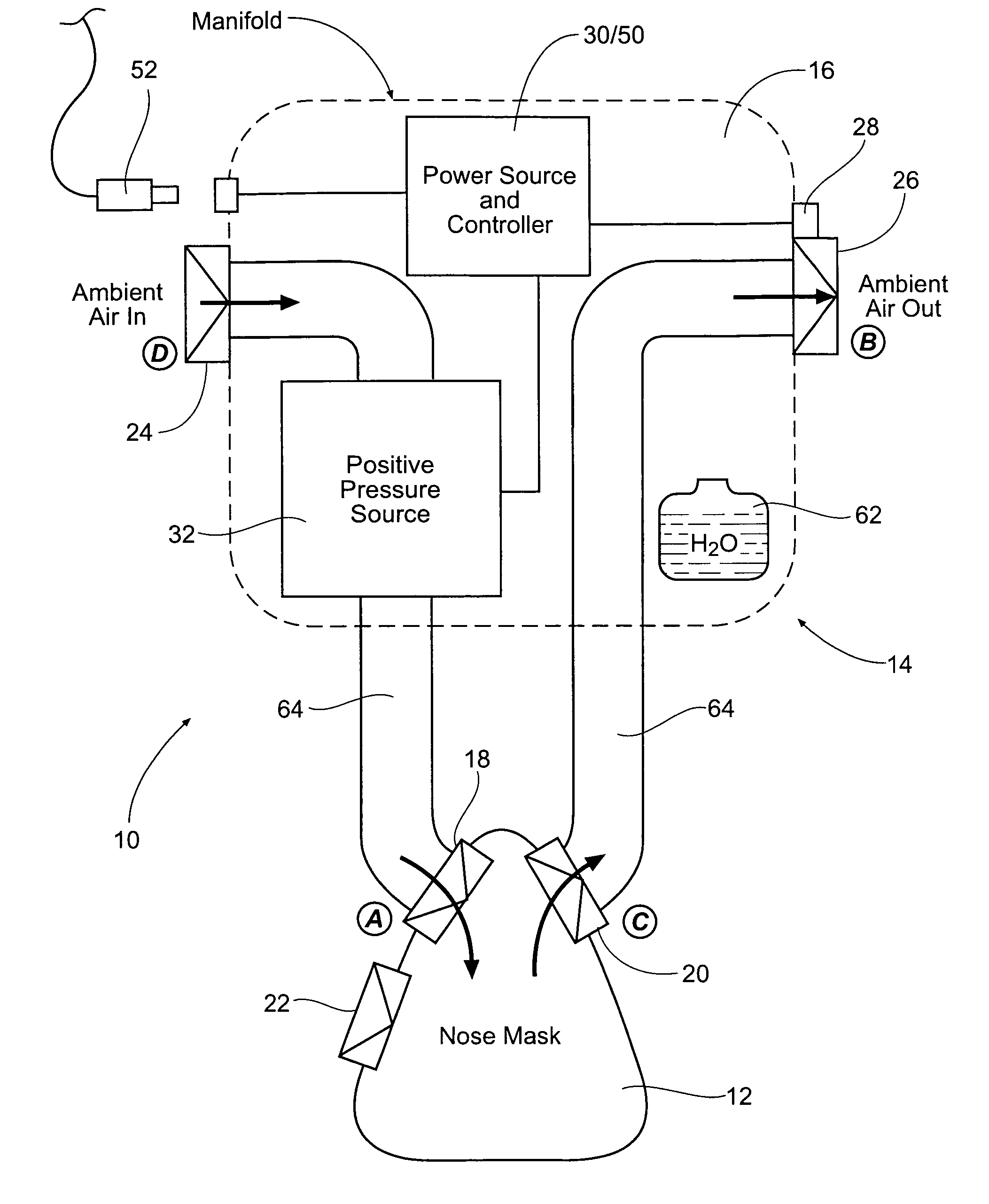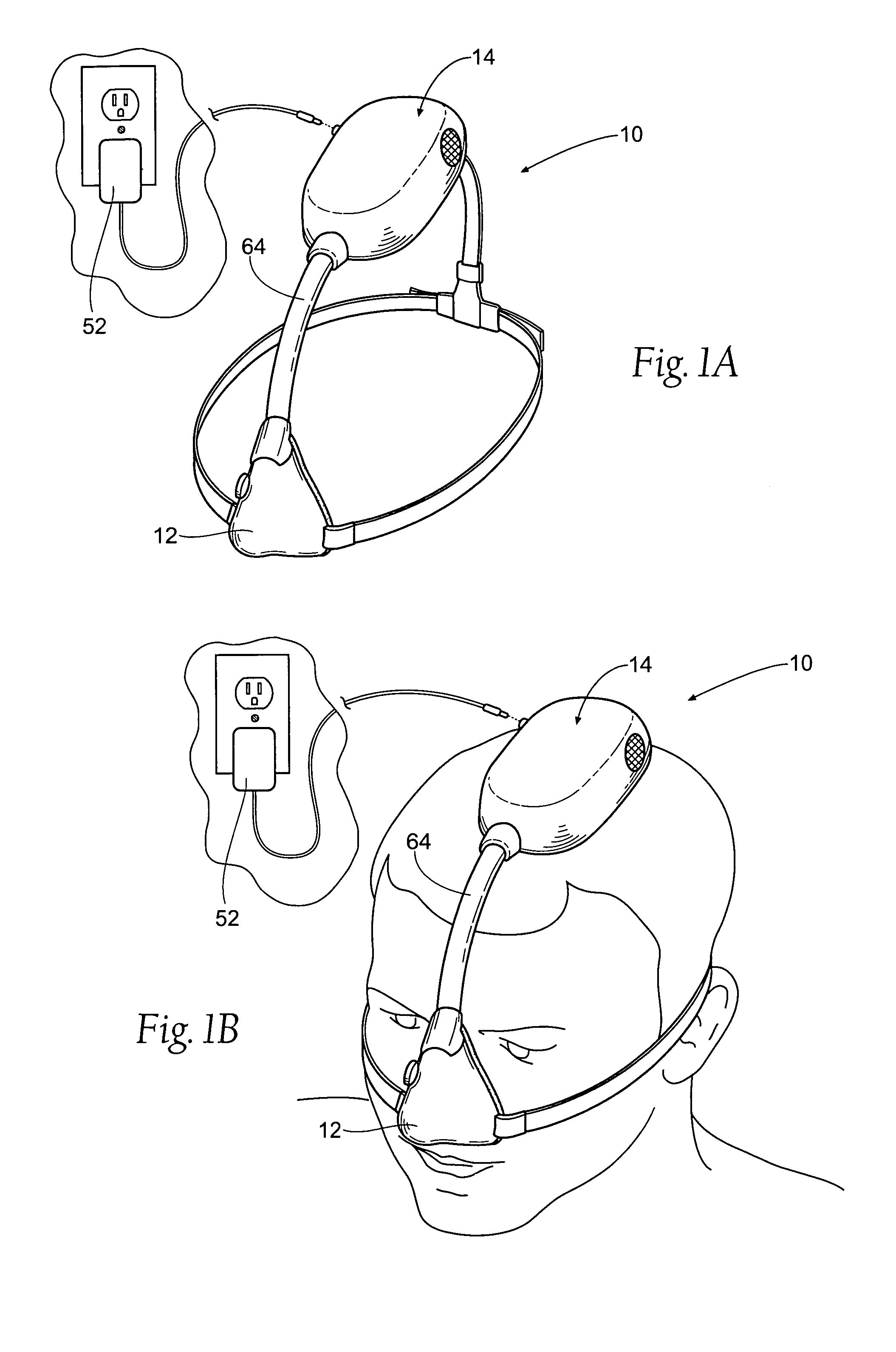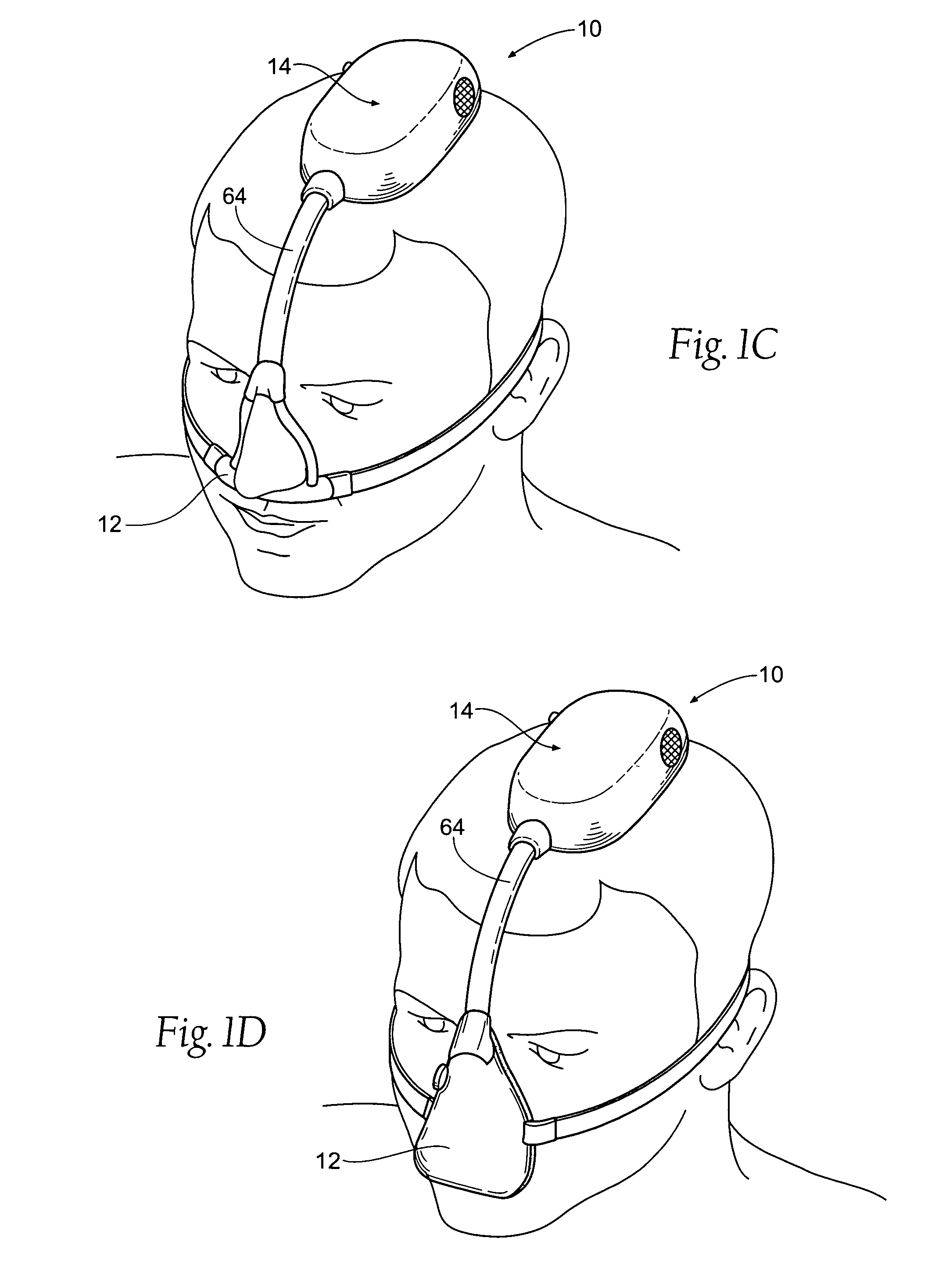Self-contained, intermittent positive airway pressure systems and methods for treating sleep apnea, snoring, and other respiratory disorders
a positive airway and pressure system technology, applied in the field of respiration aids, can solve the problems of restorative sleep, blood oxygen drop, and increase in blood carbon dioxide, so as to increase the pressure of the mask, inflate the upper airway, and increase the air pressure
- Summary
- Abstract
- Description
- Claims
- Application Information
AI Technical Summary
Benefits of technology
Problems solved by technology
Method used
Image
Examples
Embodiment Construction
[0037]Although the disclosure hereof is detailed and exact to enable those skilled in the art to practice the invention, the physical embodiments herein disclosed merely exemplify the invention, which may be embodied in other specific structures. While the preferred embodiment has been described, the details may be changed without departing from the invention, which is defined by the claims.
I. Overview
[0038]FIGS. 1A to 1D and 2A / B show representative embodiments of a self-contained, intermittent positive airway pressure system 10 for treating sleep apnea, snoring, and other respiratory disorders. The system 10 is sized and configured to be worn by an individual during sleep, in communication with the individual's airway, as, e.g., FIG. 1B and FIG. 2B shows. In use, the system 10 functions to maintain desired positive air pressure conditions in the upper airway during the respiration cycle. The desired positive air pressure conditions are sufficient to resist the collapse of tissue a...
PUM
 Login to View More
Login to View More Abstract
Description
Claims
Application Information
 Login to View More
Login to View More - R&D
- Intellectual Property
- Life Sciences
- Materials
- Tech Scout
- Unparalleled Data Quality
- Higher Quality Content
- 60% Fewer Hallucinations
Browse by: Latest US Patents, China's latest patents, Technical Efficacy Thesaurus, Application Domain, Technology Topic, Popular Technical Reports.
© 2025 PatSnap. All rights reserved.Legal|Privacy policy|Modern Slavery Act Transparency Statement|Sitemap|About US| Contact US: help@patsnap.com



